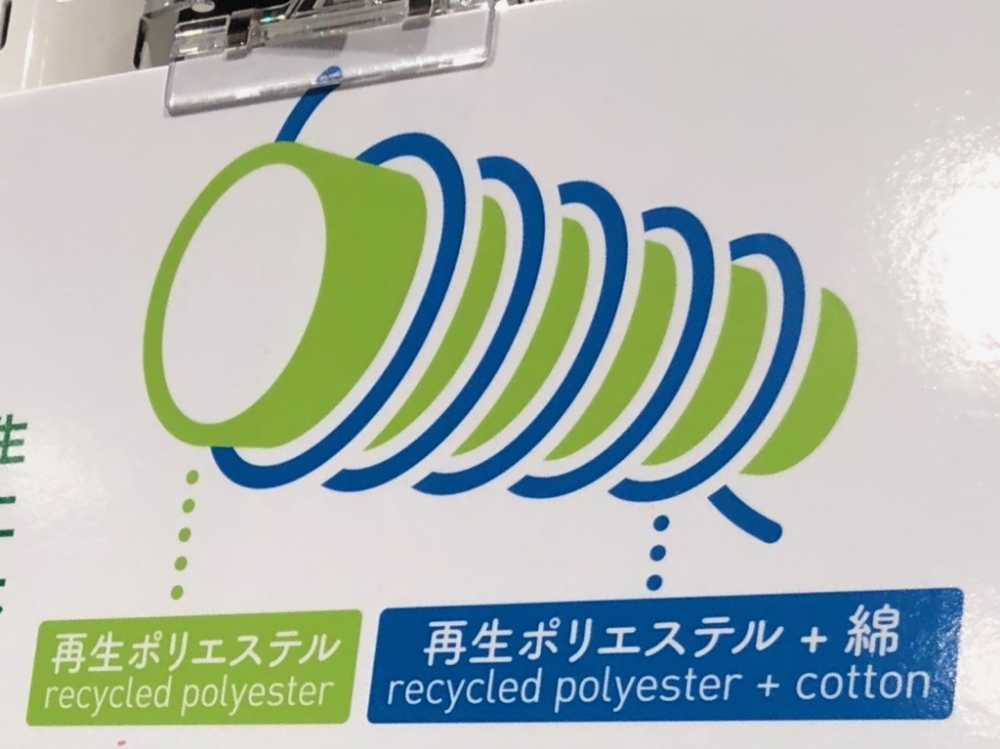Sustainable Fabrics: Vancet’s Recycled Wool, Polyester, Tencel

There are many sustainable materials out there, and being one of the most popular fabric manufacturers, VANCET offers various sustainable fabrics. This time let’s walk through some of the outstanding sustainable fabrics like Recycled Wool, Recycled Polyester and Tencel.
Recycled Wool

68180 Wool Melange [using Recycled Wool Thread]
What is recycled wool?
Reclaimed wool is a recycled product made from scraps of wool fabric or used wool products.
Wool fabrics that cannot be used as is are collected and once crushed back into a wrinkled state.
The yarn is then twisted and made into a fabric.
Advantages
Since it is made from unused wool products and unused scraps of wool fabric, it is an environmentally friendly material that reduces waste.
And it is relatively inexpensive because the raw materials are less costly than regular wool fabrics.
The price of raw materials for wool has been rising year by year, and the price of wool fabric has been rising accordingly.
In such a situation, recycled wool has become relatively more affordable and is selling well.
Precautions when handling
There are a few things to be careful about when handling recycled wool.
First, color differences occur depending on the raw material batch
Each recycled wool fabric has its original color, which is bleached and a new color is added, but there will inevitably be some darker or lighter colors.
There is also a slight difference in the blending ratio of the raw materials.
Depending on the lot and the part of the fabric, there may be a discrepancy of 1 or 2% in the blending ratio.
Azo dyes
It has been said that reclaimed wool may contain azo dyes, which are harmful to the human body, because it is made by reusing old products.
VANCET’s recycled wool is checked twice, once at the raw material stage and once at the fabric stage, to ensure that it does not contain azo dyes.
Since it has been double-checked strictly to ensure that it does not contain azo dyes, it can be used with peace of mind.
Even though fabrics made from recycled wool can be summarized as a whole, there are various types of fabrics available, such as woven and knitted fabrics.
Reclaimed wool is mostly used for winter fabrics, so stock may be low in the fall and winter. Please inquire about our stock if you are interested in purchasing during that period.
Tencel

479 Tencel™ Modal Fiber Bare Jersey (Silken Bio)
What is Tencel?
Tencel is a plant-derived chemical fiber made from pulp and produced by Lenzing in Austria, as we have mentioned several times in ApparelX News.
Tencel is a sustainable material that can be returned to the soil in about 13 months because it is made from wood pulp.
In addition, it is made using the lyocell manufacturing process, which reuses most solvents and produces no waste liquid.
Tencel, which returns to the soil and grows trees again, reuses solvents and emits no waste liquid, is attracting attention as a sustainable material that can be used indefinitely in a cycle.
Advantage of Tencel
The fabric is very soft and stretchable, which improves the fit and comfort of the wearer.
Silk-like luster and elegance
High moisture retention, moisture absorption, and quick-drying properties
Tencel is often blended with other materials to add comfort and elegance, and has recently become more common.
Disadvantages
Disadvantages include low resistance to friction and wrinkling, but it can be made relatively easy to handle by blending it with other materials, depending on the intended use and handling method.
Delicate and friction-sensitive Tencel can be damaged by heavy friction, such as in a washing machine.
If you are concerned about damage caused by friction, choosing a blend with polyurethane will increase durability and reduce damage caused by friction.
Another disadvantage is that it wrinkles easily, but by using a Tencel material combined with polyester or nylon, wrinkles are less likely to appear.
By blending with various materials, the disadvantages can be covered up, and many new materials are being developed that add to the advantages of Tencel.
Recycled Polyester

7393 Recycled PE Light Tropette
What is recycled polyester?
Recycled polyester is made from recovered plastic bottles.
Recently, many fabrics made of recycled polyester have become available.
Among them are fabrics made of core yarn, which is recycled polyester wrapped around recycled polyester containing cotton.
Core Yarn

Core yarn is a yarn made by wrapping cotton yarn around a polyester yarn, and has the advantages of both cotton and polyester.
It has excellent water absorbency, dries quickly, and has form stability.
Core yarns using recycled polyester also contain recycled polyester in the outer cotton portion. Although the yarn is almost entirely made of recycled polyester, the texture of the fabric is as soft as cotton because cotton is used on the surface.
Disadvantages
Recycled polyester involves various processes before it is made into fabric from PET bottles, which increases the cost. The price is a little higher than those using regular polyester.
Products made from recycled polyester have been said to be uncomfortable to wear, but recently comfort has been added through the use of interwoven fabrics with other materials and the use of core yarns.
Recycled Polyester Product list.
Conclusion
We hope this helps you have a better glance about Vancet and give you little suggestion for your eco-friendly garments collection. What is your favorite sustainable fabric that you discovered recently? For more sustainable fabrics, please visit our Sustainable Products Page.



